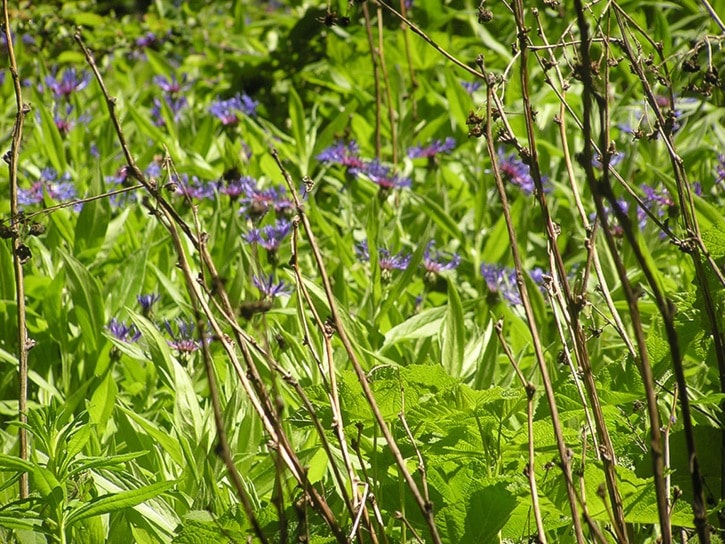The Village of Burns Lake is taking on the fight against unwanted, invasive plant species in the area through the Northwest Invasive Plant Council (NWIPC).
Burns Lake is one of 25 financial partners of the NWIPC, a non-profit society that is made up of a board of directors and general membership, approximately of which there is 700 members currently.
As well, there are two partnerships with First Nations communities, with more partnerships being developed for the future.
The NWIPC, per the provincial Weed Act, is the weed committee in Burns Lake, effectively meaning that the NWIPC is the committee that strives to prevent and control the spread of invasive plants in Burns Lake with the goals of preventing further damage to ecosystems and to rehabilitate ecosystems that have been degraded by invasive plants.
As previously noted in the Lakes District News the NWIPC covers the area from Valemount to Haida Gwaii going East to West and North to the Yukon boarder, excluding the Peace region.
Darrell Hill, 'Roots and Shoots' contractor, who is contracted by the NWIPC to provide eradication and control of invasive plants in the Burns Lake area, notes that environmental impacts stemming from invasive plant species can be severe.
"The spread of invasive species is the second biggest threat to biodiversity after urban expansion so other than putting a parking lot over something, invasive species are number two," Hill said, "Once infested many sites are beyond control."
Impacts to the environment caused by invasive species are lowering the economic production values in infected native grassland areas as it pertains to grazing, wild flowers and endangered species get pushed out as the invasive species invade the area and plants and herbs that were collected for herbal remedies are taken over by invasive species.
The number one invasive specie of concern in Burns Lake is Mountain Bluet, a taprooted herb that prefers sun and dry to medium-wet conditions for optimal growth.
The flower petals can be blue or purple in colour and it blooms in late spring to early summer.
Mountain Bluet is of great concern because it creates a monoculture, once infested nothing besides Mountain Bluet will grow in the area.
Once treated though, native plant species will begin to sprout again.
"I treated a Mountain Bluet site up Moe Road just West of town and that was a monoculture and you could see the brown patches where the Mountain Bluet was gone," Hill said, "The good news is there are lots of other plants,even strawberries coming back up in the spots I sprayed."
So far this year, Hill, has treated one and a half hectares of land infested with Mountain Bluet, both mechanically by pulling plants, and chemically by spraying the plant with herbicide.
Hill uses herbicides that are very selective in nature, meaning that they will target only the invasive plant, leaving other plant growth in the area unharmed.
Despite the efforts, every year more and more Mountain Bluet infestation continue to pop up in Burns Lake as they spread through private properties, out along ditches and through green belts.
Besides actively controlling invasive species on the front lines, the NWIPC has also taken to the community to educate its members about the harms of these species.
Involvement in the community weed program, holding community weed pulls, such as the one that was held in connection with the Rotary Club of Burns Lake last year and generally educating the public about controlling these species in their own yards.
"We are going to continue to aggressively contain all known sites and continue to raise public awareness," Hill said, "We want to continue to do more public awareness to get the property owners to know what the situation is and why it's a problem if you're not controlling invasive species on their property."
Hill says a perfect example of community awareness was the infestation of Mountain Bluet up near Saul Creek.
He was notified of it by a community member and wouldn't have known about the infestation otherwise.
As previously stated, the NWIPC is funded by 25 financial partners with Burns Lake being one of them.
Of the funds that are contributed by each partner, 15 per cent is taken off for administrative fees for the program, with the rest of the money being spent controlling invasive plant species in the community. The problem that Burns Lake is now facing is that the budget for invasive plant species control has already been spent for the year even though there are an additional six sites that have yet to be treated.
If left untreated these infestations will continue to grow in size and therefore become even more costly in the future to manage.
The NWIPC has requested that the Village of Burns Lake contribute an additional $3000 towards the control of invasive plant species.
That amount would bring the total contribution of Burns Lake up to $4500 per annum for the management of these species.
This was something that village council was unwilling to consider at the last council meeting on July 15 saying that this was a topic that would be brought up during budget discussions in the fall.
However, the village will remain an active partner of the NWIPC in the meantime.
